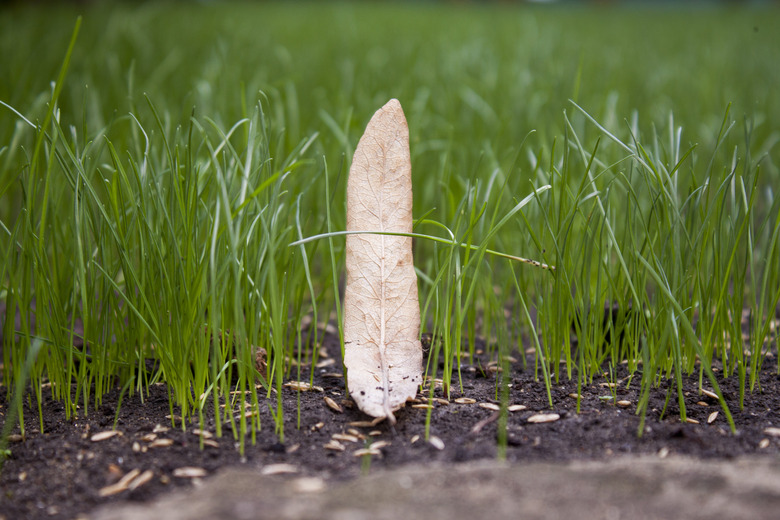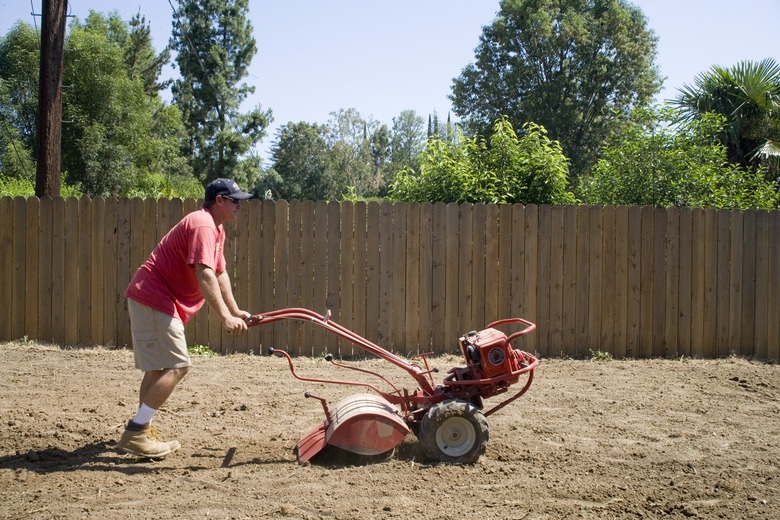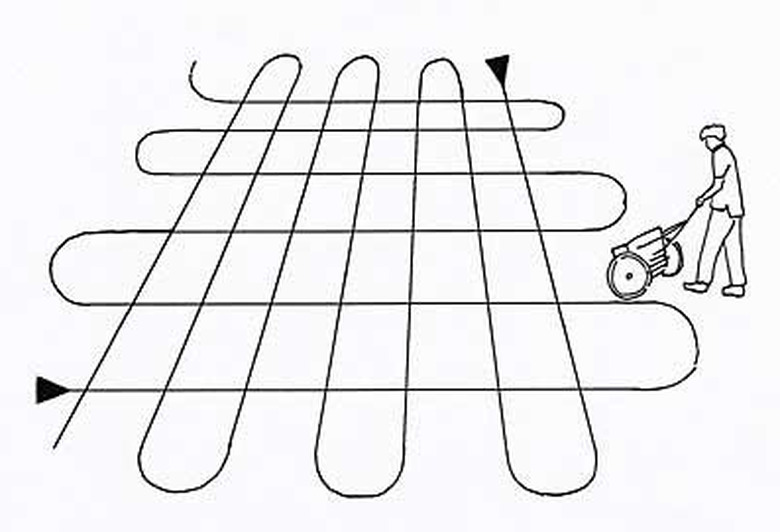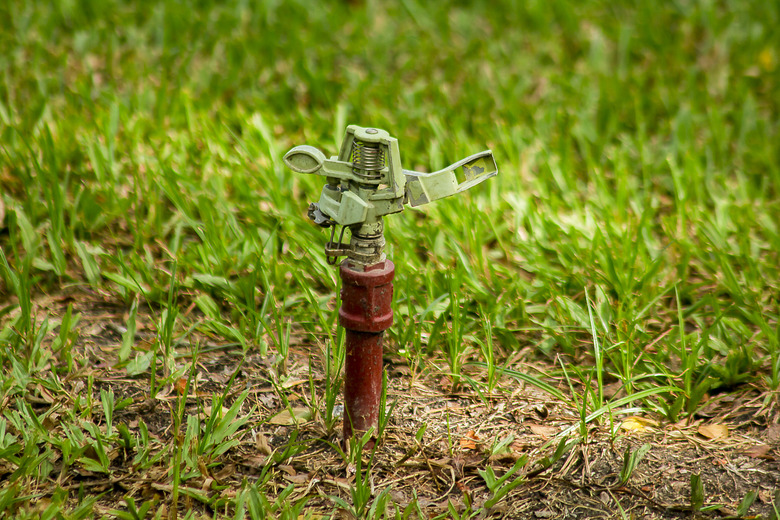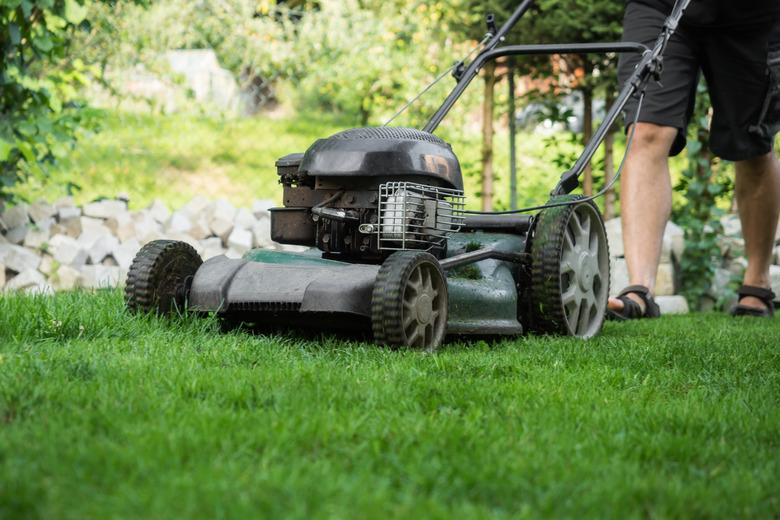How To Start A Lawn From Seed
Growing a lawn from seed is enormously satisfying and surprisingly simple. It takes a bit of labor, for sure, as well as some diligent watering, but your efforts are rewarded within days as you see the tiny green hairs begin sprouting from the bald brown earth. Where vegetables and flowers grown from seed can take months to mature, grass seed germinates in one to two weeks and is ready to mow before you know it.
The keys to a successful lawn are thorough soil prep, using the proper seed type (or types) and applying the seed in the proper amount. Then, of course, there is the watering. If you don't water regularly the grass won't come up. Once the grass is fully established, you can shift to a normal watering schedule.
Choose the Right Seed and Planting Time for Your Climate
Choose the Right Seed and Planting Time for Your Climate
Check with a local extension service for recommendations on the best time of year to seed a lawn in your climate. The same experts can advise you on the best types of seed to use as well as other critical aspects of starting a lawn, such as watering schedules and common pitfalls to avoid.
The seed you use and the local climate can make a big difference. For example, the extension service at Colorado State University advises homeowners in the Denver area to seed warm-season grasses between April and July, but not after July, while cool-season grasses can be seeded anytime between March and September. Those in areas above 7,000 feet get different advice: Use only cool-season grasses, and seed lawns in spring. Each region will have different recommendations, so always check with a university extension service or a knowledgeable local garden center pro.
Prepare the Seed Bed for Your New Lawn
Prepare the Seed Bed for Your New Lawn
Almost all soil needs some kind of prep work to provide a healthy growing bed for grass seed. The extension service at Iowa State University stresses the need for a soil test and proper fertilization and/or amending, followed by tilling the soil to a depth of 4 to 6 inches, using a rototiller or other means (for small areas, you can simply turn over the soil with a shovel, as with a garden bed).
You can have a soil test done at your local extension office. The results will tell you whether the soil is lacking any essential nutrients, such as nitrogen or phosphorous. Choose a fertilizer blend based on your test results. Apply the fertilizer as directed by the manufacturer, then till the soil. ISU extension advises that this is the only opportunity you will have to feed the root zone for a new lawn.
In addition to fertilizing, soil that is hard and compacted should be amended with sand and compost during the tilling process. Grass seed grows best in a 4-inch-deep seed bed with equal parts black dirt (topsoil), sand and compost. There's no reason to add several inches of topsoil for a new lawn, nor should you cover the seed with a heavy layer of topsoil. The CSU extension recommends a light raking after applying seed, and it advises against covering the seed with topsoil or sand.
Once the soil is churned up, rake it by hand to level the surface and fill dips and holes. This is also a good time to remove rocks that are too large to sink into the soil. Finally, roll the seed bed with a lawn roller to compact the soil lightly. The Michigan State University extension recommends a 200- to 300-pound roller (you simply add water to the roller to increase the weight) and says that the soil is ready when your shoe heel compresses the soil about 1/2 inch.
Applying the Lawn Seed
Applying the Lawn Seed
Grass seed does best when it's applied evenly and in the proper amount. Avoid the temptation to throw down extra seed with the assumption that more seed is better. Excess seed may indeed produce lots of grass, but the plants will be overcrowded and will compete for survival. It's better to have too little than too much. Grass is very good at filling in small bare spots on its own, but if there are large spots after the rest of the grass has grown in, simply re-seed those areas.
Apply seed in two passes, using a push-behind (drop) spreader. Follow the seed manufacturer's (and the local extension office's) recommended seeding rate. To help ensure even distribution, apply one-half of the seed to the entire area in an east-west direction, then apply the remaining half in a north-south direction; that is, perpendicular to the first pass.
Gently rake the seed bed to smooth the soil surface and lightly cover the seeds with soil. You don't need to cover all of the seeds; they can sprout from the surface, but they won't do as well if they are under too much soil. Some seed manufacturers recommend rolling the surface with a lawn roller to embed the seeds slightly. You can do this, too, if directed or desired.
Watering Your New Lawn
Watering Your New Lawn
Water the seed bed lightly immediately after seeding. The entire surface should be wet, but there should not be pooling water or any runoff or flow that can wash the seeds away. Thereafter, water regularly, two to four times per day, to keep the soil moist but not saturated. Grass seed germinates in 7 to 14 days when conditions are ideal; this may take longer in unseasonably hot or cloudy weather. But rest assured that if you water enough to keep the soil dark—and avoid overwatering—the sprouts will come up.
After the new grass has reached a height of 1 to 2 inches, you can reduce the watering time, based on the weather and your climate. However, if you live in a dry area, getting lazy about watering will spell disaster. Keep a close eye on moisture until the grass is fully established.
Mowing and Maintaining a Seeded Lawn
Mowing and Maintaining a Seeded Lawn
You might be anxious to make that first mower cut as a rite of passage for your new lawn. On the other hand, you might be reluctant to attack those tender green blades with a mower. But the best approach is a compromise; mowing at the right time actually encourages new growth. The ideal time to mow depends on the grass type, so follow the seed manufacturer's recommendations.
As an example, you should mow Kentucky bluegrass for the first time when it is 3 to 3 1/2 inches tall, according to the ISU extension. Always limit cutting to one-third of the blade length. For example, if the grass is 3 inches long, trim it by no more than 1 inch, leaving at least 2 inches of grass. If you let the grass grow too long, ISU warns, you'll have to cut it in stages so that you remove only one-third of its length each time, waiting several days between stages. Trimming grass more than a third of its length, regardless of its original length, can lead to scalping (i.e., cutting your grass too short for its own good).
Continue watering and mowing your new lawn diligently to give it as much strength as possible. Avoid the use of harsh fertilizers—specially, weed killers—until the lawn is fully established. To rid the lawn of new weeds that came up with the grass, you can apply most broadleaf weed killers after the grass has been mowed three or four times.
